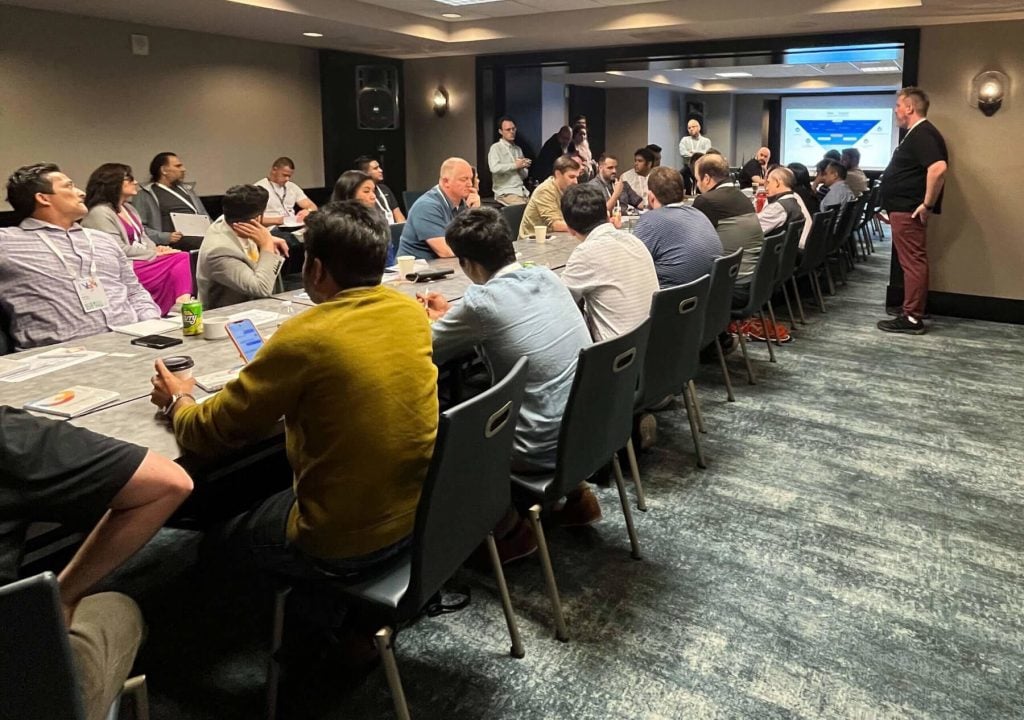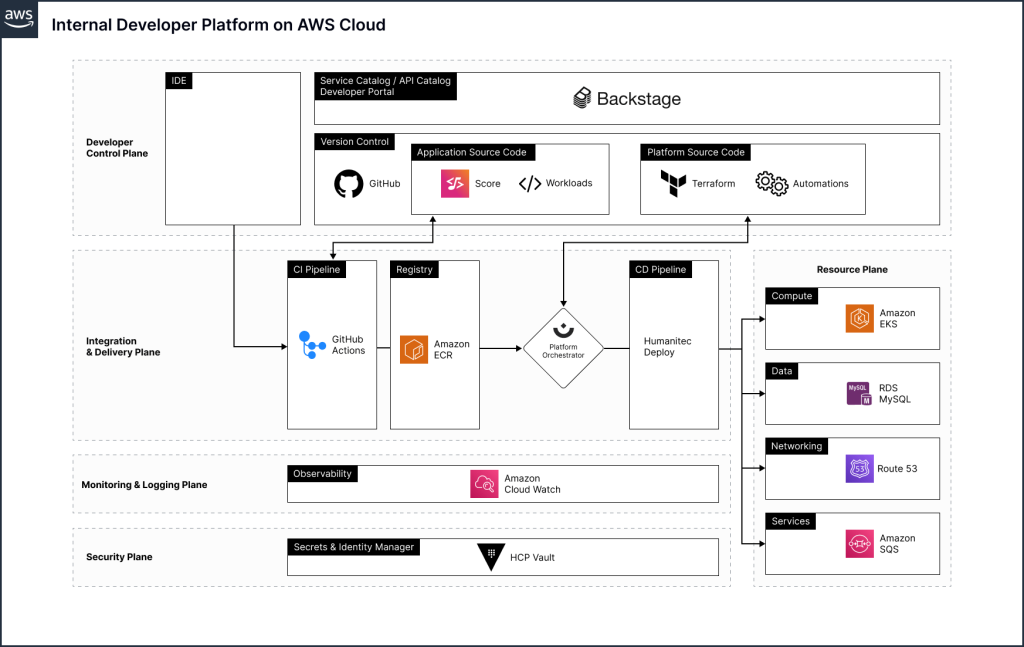
Many people are still confused between internal developer platforms and internal developer portals, but the difference between the two is clear.
Translated from Internal Developer Platform vs. Internal Developer Portal: What's Up? by Luca Galante.
I'm sure you can easily guess what everyone is talking about at recent tech events like KubeCon Paris and Google Next 24. Yes, AI of course. It will be hard to top it this year. But it was very interesting (and exciting) to see so many sessions and conversations covering the second most discussed trend (far more than all others): platform engineering .
Humanitec co-hosted a main platform engineering conference with Google Cloud and Thoughtworks at Next , and we could barely accommodate the number of people.
Source: Google
The volume of conversations about platform engineering increases every year, but crucially, so does the quality and specificity. Just two years ago at KubeCon Detroit, I had to explain to most people what platform engineering was. Last year, everyone was talking about it, and there are still some enterprise-grade example Internal Developer Platform (IDP) implementations being discussed.
This year saw a significant increase in the number of reference architectures for enterprise IDPs presented and discussed. One of my favorite talks was by André Alfter of Bechtle, a leading German IT company, who introduced Bechtle's IDP for hybrid high-security setups , which includes the open source workload specification Score and Platform Orchestrator .
This is all great and speaks volumes about the rapidly maturing field of platform engineering. Businesses that are not yet embarking on a platform initiative (or at least planning one) are seriously running the risk of falling behind their competitors – technically speaking, from a technology employer brand perspective, and from a time-to-market perspective.
However, confusion remains in the field. In a lot of conversations I've had, people are still trying to understand the difference between an internal developer platform and an internal developer portal. A lot of confusion comes from people using the same abbreviation IDP for both. But the distinction between them is now clear and established.
What is the On-Premise Developer Platform (OG)?
Platform engineering is the discipline that bundles technologies and tools within engineering organizations into golden paths that abstract complexity away from application developers, enable self-service, and reduce cognitive load.
The sum of these golden paths, and what the platform engineering team built, is an internal developer platform, the original IDP.
Bechtle's presentation showcased one of the latest reference architecture examples of enterprise IDPs, following what has become the standard since the McKinsey team proposed the concept at PlatformCon23 .
Sample reference architecture for IDP on AWS
An IDP that is truly suitable for enterprises consists of the following five levels:
- Developer control plane : This is the primary configuration layer and interaction point for users of the platform. Components include workload specifications (such as Score) and developer portals for interaction.
- Integration and delivery plane : This plane is used to build and store images, create application and infrastructure configurations, and deploy the final state. It typically consists of a continuous integration (CI) pipeline, an image registry, a platform orchestrator , and a continuous delivery (CD) system.
- Resource plane : This is where the actual infrastructure exists, including clusters, databases, storage, or DNS services.
- Monitoring and logging plane : This plane provides real-time metrics and logs to applications and infrastructure.
- Security plane : This plane manages secrets and identities to protect sensitive information—for example, storing, managing, and securely retrieving API keys and credentials or secrets.
At the heart of the enterprise-grade platform is a platform orchestrator, a core configuration engine that reads abstract requests from developers (e.g., “I need a Postgres”) and matches them with rules and golden paths defined by the platform engineering team Make a match. This is what enables true developer self-service that adheres to the highest security and compliance standards. Platform Orchestrator is the backend of IDP where the platform team builds all the core logic.
What is the internal developer portal (front-end)?
In this context, it is very simple to understand a portal (such as Backstage) as the front end of the platform. Gartner defines an internal developer portal as “the interface for accessing internal developer platform functionality.”
Therefore, the portal is based on a user interface (UI) rather than an API, command line interface (CLI), or code-based interface (for example, Score ) in the IDP . They allow developers to access service catalogs and scaffolding templates, and provide them and other stakeholders (for example, executives) with a layer of visibility into the underlying IDP.
Where to start?
I hope this helps clarify the difference between an internal developer platform and a portal. The next natural question is where should you start. As Aaron Erickson, who builds the platform at Salesforce, explains :
“Building an in-house developer platform is like building a house. You should start with the foundation, the backend, and then later add the walls with doors and windows (the frontend). Building a platform by starting with the portal is like building a house by starting with the front door.”
A portal can be a great interface for your developers to access the platform. But make sure you get the right backend first . Start small. Move quickly using a Minimum Viable Platform (MVP) framework and prove value to all key stakeholders before scaling to launch a full enterprise-grade IDP.
RustDesk suspends domestic services due to rampant fraud Apple releases M4 chip Taobao (taobao.com) restarts web version optimization work High school students create their own open source programming language as a coming-of-age gift - Netizens' critical comments: Relying on the defense Yunfeng resigned from Alibaba, and plans to produce in the future The destination for independent game programmers on the Windows platform . Visual Studio Code 1.89 releases Java 17. It is the most commonly used Java LTS version. Windows 10 has a market share of 70%, and Windows 11 continues to decline. Open Source Daily | Google supports Hongmeng to take over; open source Rabbit R1; Docker supports Android phones; Microsoft’s anxiety and ambitions; Haier Electric has shut down the open platformThis article was first published on Yunyunzhongsheng ( https://yylives.cc/ ), everyone is welcome to visit.



